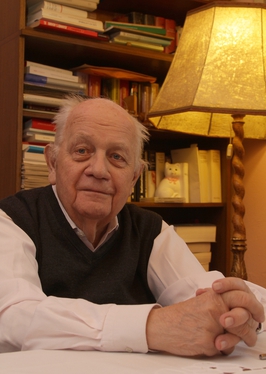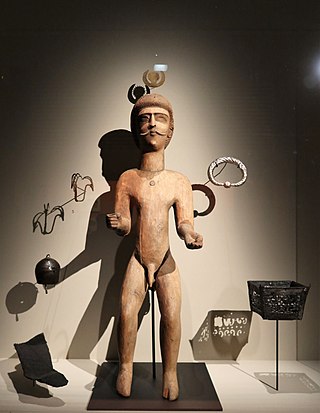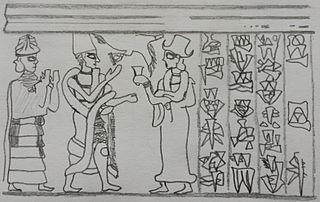
The Indo-Aryan languages are a branch of the Indo-Iranian languages in the Indo-European language family. As of the early 21st century, they have more than 800 million speakers, primarily concentrated in India, Pakistan, Sri Lanka, Bangladesh, Nepal and Maldives. Moreover, apart from the Indian subcontinent, large immigrant and expatriate Indo-Aryan–speaking communities live in Northwestern Europe, Western Asia, North America, the Caribbean, Southeast Africa, Polynesia and Australia, along with several million speakers of Romani languages primarily concentrated in Southeastern Europe. There are over 200 known Indo-Aryan languages.
In the Vedic tradition, sóma is a ritual drink of importance among the early Vedic Indo-Aryans. The Rigveda mentions it, particularly in the Soma Mandala. Gita mentions the drink in chapter 9. It is equivalent to the Iranian haoma.
Mitra is the name of an Indo-Iranian divinity that predates the Rigvedic Mitrá and Avestan Mithra.

Mitanni, earlier called Ḫabigalbat in old Babylonian texts, c. 1600 BC; Hanigalbat or Hani-Rabbat in Assyrian records, or Naharin in Egyptian texts, was a Hurrian-speaking state in northern Syria and southeast Anatolia with Indo-Aryan linguistic and political influences. Since no histories, royal annals or chronicles have yet been found in its excavated sites, knowledge about Mitanni is sparse compared to the other powers in the area, and dependent on what its neighbours commented in their texts.
Vedic Sanskrit, also simply referred as the Vedic language, is an ancient language of the Indo-Aryan subgroup of the Indo-European language family. It is attested in the Vedas and related literature compiled over the period of the mid-2nd to mid-1st millennium BCE. It is orally preserved, predating the advent of writing by several centuries.

Washukanni was the capital of the Hurrian kingdom of Mitanni, from around 1500 BC to the 13th century BC.

Tushratta was a king of Mitanni, c. 1358–1335 BCE, at the end of the reign of Amenhotep III and throughout the reign of Akhenaten. He was the son of Shuttarna II. Tushratta stated that he was the grandson of Artatama I. His sister Gilukhipa and his daughter Tadukhipa were married to the Egyptian pharaoh Amenhotep III; Tadukhipa later married Akhenaten who took over his father's royal harem.

Indo-Iranian peoples, also known as Indo-Iranic peoples by scholars, or as Arya or Aryans from their self-designation, were a group of Indo-European speaking peoples who brought the Indo-Iranian languages, a major branch of the Indo-European language family, to major parts of Eurasia in waves from the first part of the 2nd millennium BC onwards. They eventually branched out into Iranian peoples and Indo-Aryan peoples.

The Indo-Aryan migrations were the migrations into the Indian subcontinent of Indo-Aryan peoples, an ethnolinguistic group that spoke Indo-Aryan languages. These are the predominant languages of today's Bangladesh, Maldives, Nepal, North India, Eastern Pakistan, and Sri Lanka.

Manfred Mayrhofer was an Austrian Indo-Europeanist who specialized in Indo-Iranian languages. Mayrhofer served as professor emeritus at the University of Vienna. He is noted for his etymological dictionary of Sanskrit.

Matsya was an ancient Indo-Aryan tribe of central South Asia whose existence is attested during the Iron Age. The members of the Matsya tribe were called the Mātsyeyas and were organised into a kingdom called the Matsya kingdom.

Mitra is a Hindu god and generally one of the Adityas, though his role has changed over time. In the Mitanni inscription, Mitra is invoked as one of the protectors of treaties. In the Rigveda, Mitra appears primarily in the dvandva compound Mitra-Varuna, which has essentially the same attributes as the god Varuna alone, e.g. as the principal guardian of ṛtá "Truth, Order". In the late Vedic texts and the Brahmanas, Mitra is increasingly associated with the light of dawn and the morning sun. In the post-Vedic texts – in which Mitra practically disappears – Mitra evolved into the patron divinity of friendship, and because he is "friend", abhors all violence, even when sacred.
Vedic Sanskrit has a number of linguistic features which are alien to most other Indo-European languages. Prominent examples include: phonologically, the introduction of retroflexes, which alternate with dentals, and morphologically, the formation of gerunds. Some philologists attribute such features, as well as the presence of non-Indo-European vocabulary, to a local substratum of languages encountered by Indo-Aryan peoples in Central Asia (Bactria-Marghiana) and within the Indian subcontinent during Indo-Aryan migrations, including the Dravidian languages.

Indigenous Aryanism, also known as the Indigenous Aryans theory (IAT) and the Out of India theory (OIT), is the conviction that the Aryans are indigenous to the Indian subcontinent, and that the Indo-European languages radiated out from a homeland in India into their present locations. It is a "religio-nationalistic" view on Indian history, and propagated as an alternative to the established migration model, which considers the Pontic–Caspian steppe to be the area of origin of the Indo-European languages.
Proto-Indo-Iranian paganism was the beliefs of the speakers of Proto-Indo-Iranian and includes topics such as the mythology, legendry, folk tales, and folk beliefs of early Indo-Iranian culture. By way of the comparative method, Indo-Iranian philologists, a variety of historical linguist, have proposed reconstructions of entities, locations, and concepts with various levels of security in early Indo-Iranian folklore and mythology. The present article includes both reconstructed forms and proposed motifs from the Proto-Indo-Iranian period, generally associated with the Sintashta culture.

Scholars have suggested different theories for the origin of the name Kurd. According to the 19th century English Orientalist Godfrey Rolles Driver, the term Kurd is related to the Sumerian Karda which was found from Sumerian clay tablets of the third millennium B.C. More recent scholarship suggests it comes from the Middle Persian word for "nomad", or may ultimately be derived from a toponym or tribal name, such as the Cyrtii or from Corduene.

Aryan or Arya is a term originally used as an ethnocultural self-designation by Indo-Iranians in ancient times, in contrast to the nearby outsiders known as 'non-Aryan'. In Ancient India, the term ā́rya was used by the Indo-Aryan speakers of the Vedic period as an endonym (self-designation) and in reference to a region known as Āryāvarta, where the Indo-Aryan culture emerged. In the Avesta scriptures, ancient Iranian peoples similarly used the term airya to designate themselves as an ethnic group, and in reference to their mythical homeland, Airyanǝm Vaēǰō. The stem also forms the etymological source of place names such as Alania and Iran.

The Yamhad dynasty was an ancient Amorite royal family founded in c. 1810 BC by Sumu-Epuh of Yamhad who had his capital in the city of Aleppo. Started as a local dynasty, the family expanded its influence through the actions of its energetic ruler Yarim-Lim I who turned it into the most influential family in the Levant through both diplomatic and military tools. At its height the dynasty controlled most of northern Syria and the modern Turkish province of Hatay with a cadet branch ruling in the city of Alalakh.

Proto-Indo-Aryan is the reconstructed proto-language of the Indo-Aryan languages. It is intended to reconstruct the language of the Proto-Indo-Aryans, who had migrated into the Indian subcontinent. Being descended from Proto-Indo-Iranian, it has the characteristics of a Satem language.










